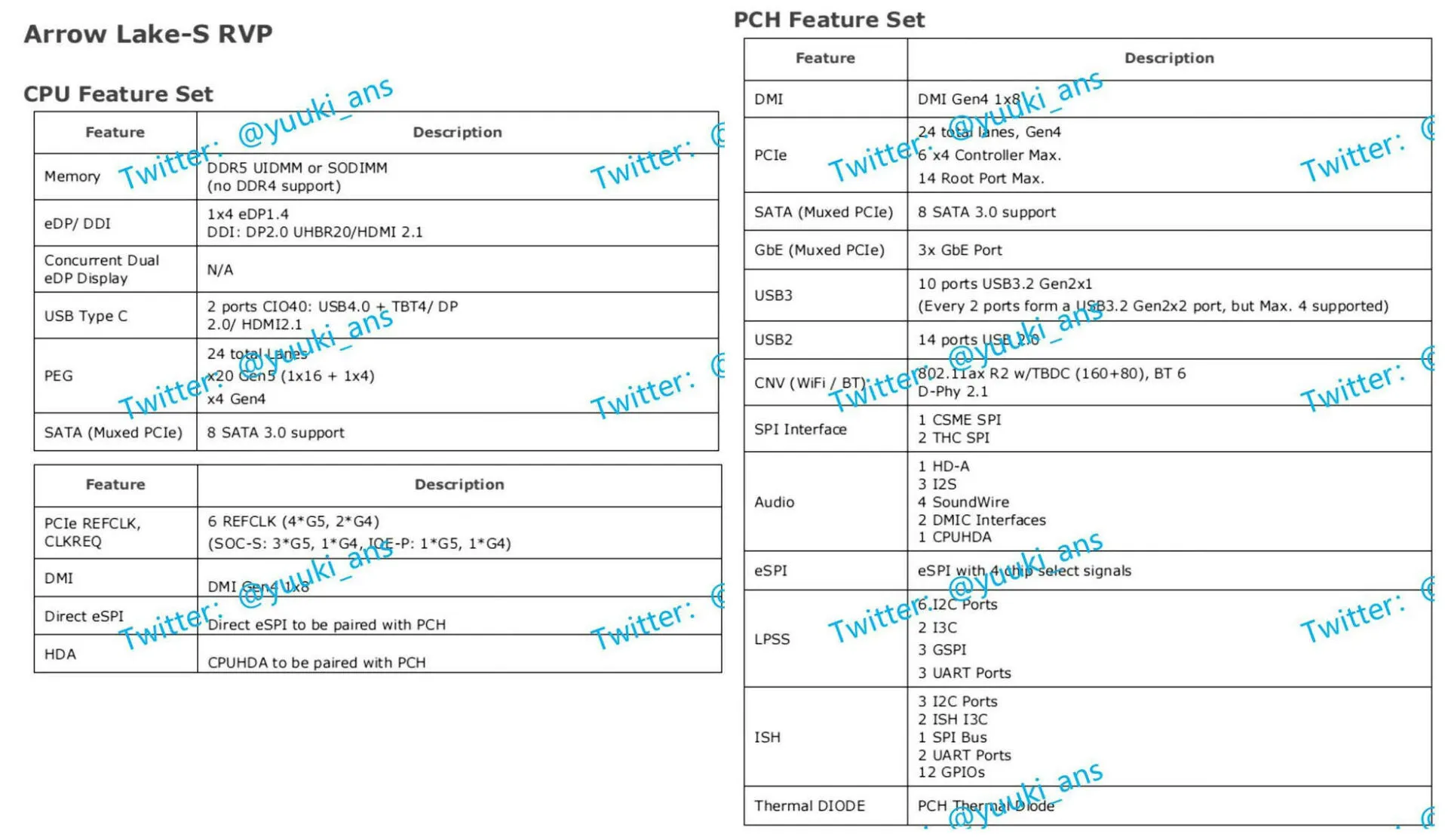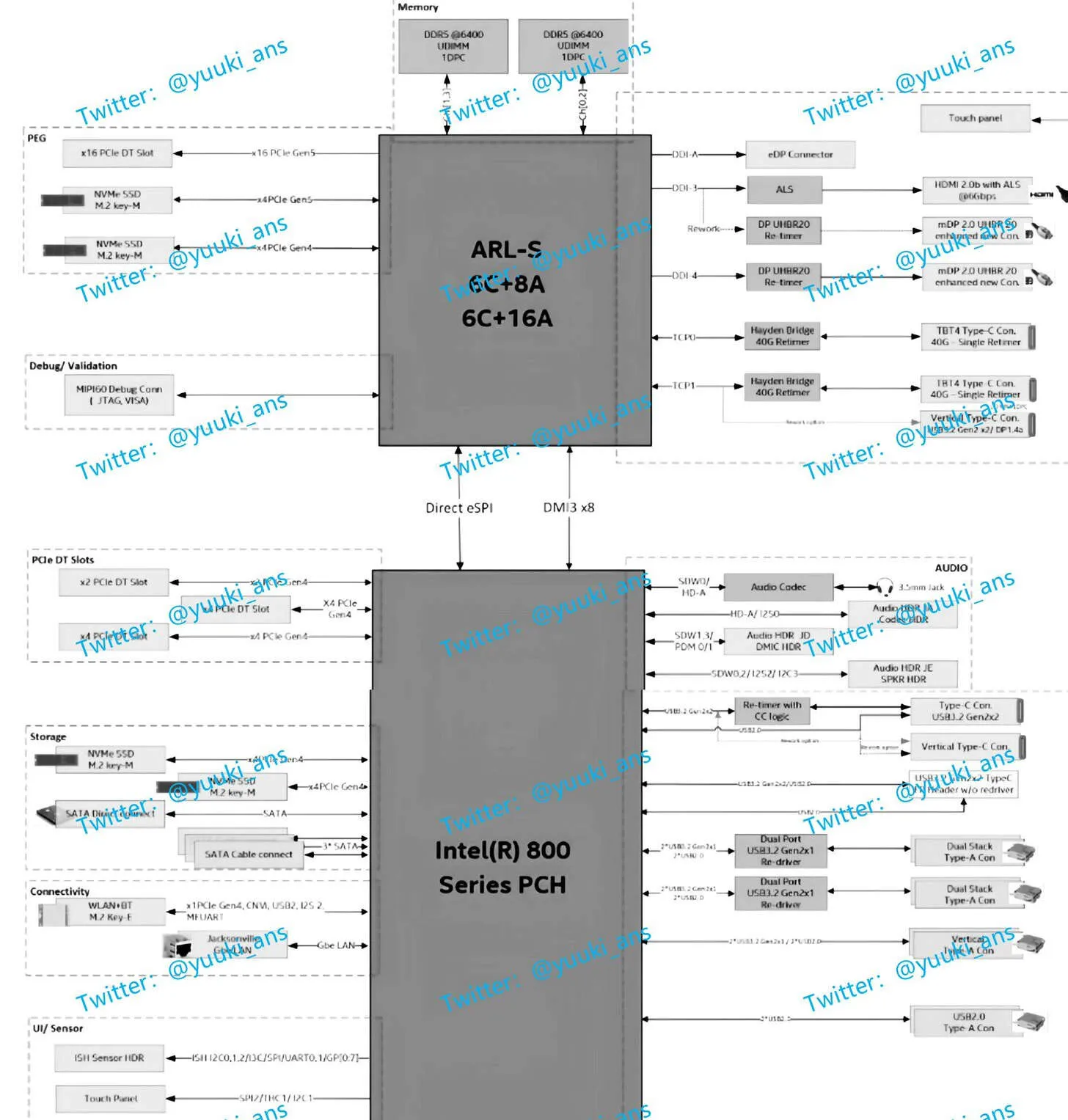Speculations on social media platforms hinted at the cancellation of a previous platform, but it appears that its planned specifications have been integrated into Arrow Lake-S. In terms of compatibility, Arrow Lake-S is designed with LGA 1851 pins and exclusively supports DDR5-6400 MT/s memory, marking it as Intel's first desktop platform to solely accommodate DDR5. Previous iterations, starting from the 12th Generation Alder Lake-S, introduced DDR5 support while still accommodating DDR4 up to the 14th Generation.
Arrow Lake-S is expected to come in four configurations:
- 8 Performance-Cores (P-Cores) + 16 Efficient-Cores (E-Cores), 36MB cache;
- 8 P-Cores + 12 E-Cores, 30MB cache;
- 6 P-Cores + 8 E-Cores, 24MB cache;
- 6 P-Cores + 4 E-Cores, 20MB cache.
From a connectivity standpoint, the Arrow Lake-S processor will support multiple PCIe configurations: 16 lanes of PCIe 5.0, 4 lanes of PCIe 5.0, and 4 lanes of PCIe 4.0. This setup also includes native support for PCIe 5.0 specification M.2 SSDs. The CPU is designed to support DisplayPort 2.0 and HDMI 2.1, likely due to the integration of the Alchemist GPU architecture. Regarding external connectivity, the Arrow Lake-S platform introduces native Thunderbolt 4 support. The inclusion of Thunderbolt 4 will depend on the motherboard manufacturer, with higher-end models expected to feature it, whereas mid-range and entry-level boards may opt for USB4 standards. For Thunderbolt 5 capabilities, Barlow Ridge chips are required.
The Intel 800 series chipsets are set to offer 24 PCIe 4.0 lanes, with 8 lanes dedicated to M.2 SSDs and the rest allocated to other PCIe-connected devices. Despite the emergence of Wi-Fi 7, the Intel 800 series is expected to integrate IEEE 802.11ax (Wi-Fi 6E), not the newer IEEE 802.11ae specification.
Following the Arrow Lake-S, Intel plans to introduce an Arrow Lake-S Refresh utilizing the LGA 1851 pin layout. However, details about the subsequent Panther Lake-S and its potential use of the LGA 1851 socket are still unclear, with more information anticipated around 2026.
Source: benchlife




